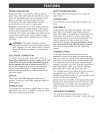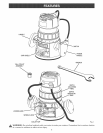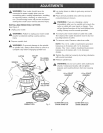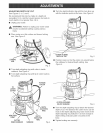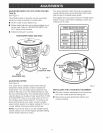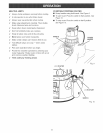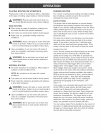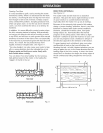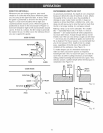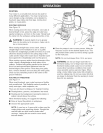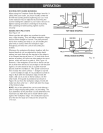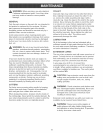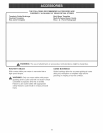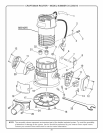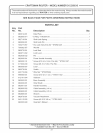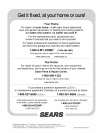
ROUTINGWITHGUIDEBUSHINGS
WhenusingtheTempUateGuideBushingsItemNo.9-
25082withyourrouter,youmustvisuallycenterthe
bitwiththebushingbeforebeginningyourcut.Your
routersubbasemaybeadjustedbyboseningthe
screwshoUdingthesubbasetoyourrouter.Besureto
tightenbcHngarmbeforecenteringbitinbushing.
Aftercenteringbitwithbushing,tightenscrews
secureUy.
EDGINGWITHPILOTBITS
See Figure 18.
Arbor-type bits with pilots are excellent for quick,
easy, edge shapinga They wHUfollow workpbce edges
that are either straight or curved. The pilot prevents
the bit from making too deep a cut; and hoUding the
pilot firmUy in contact with the workpbce edge
throughout prevents the cut from becoming too
shallow.
Whenever the workpiece thickness together with the
desired depth of cut (as adjusted by router depth
setting) are such that only the top part of the edge is
to be shaped (leaving at bast a 1/16 inch thick uncut
portion at bottom), the pilot can ride against the uncut
portion, which wiii serve to guide it. See Figure /8.
However, if the workpiece is too thin or the bit set too
low so that there will be no uncut edge to ride the pilot
against, an extra board to act as a guide must be
placed under the workpiece. This "guide" board must
have exactly the same contour -- straight or curved
-- as the workpiece edge. If it is positioned so that its
edge is flush with the workpiece edge, the bit will
make a fuji cut (in as far as the bit radius). On the
other hand, if the guide is positioned as shown in
Figure 18 (out from the workpiece edge), the bit will
make less than a full cut -- which will alter the shape
of the finished edge.
NOTE: Any of the piloted bits can be used without a
pilot for edge shaping with guides, as preceding. The
size (diameter) of the pilot that is used determines the
maximum cut width that can be made with the pilot
against the workpiece edge - the small pilot exposes
all of the bitl the large one reduces this amount by
1/16 inch.
TOPEDGESHAPING
Go,oE
WHOLE EDGE SHAPING
Fig. 18
17



